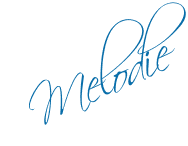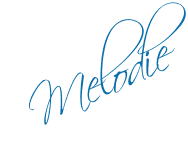
There’s been a lot of press about the roles of Venus and Mars in soulmate relationships, but what exactly does that mean in the true astrological context?
Are these two planets the primary indicators of relationship compatibility, or are they just one small part of what makes up a good connection between partners?
Venus and Mars are actually relatively minor factors for determining relationship compatibility, and are rarely “karmic indicators.” They’re good for determining attraction (by sign) but little else.
They’re usually present when there are strong sexual sparks or chemistry at the onset of a relationship, but don’t say much about exclusivity, longevity or commitment.
In the coming weeks, we’ll delve into Venus and Mars from a deeper, more comprehensive perspective. If you’d like to read more about how these planetary energies are expressed for men specifically, you can check out this companion piece: Men are from Mars (and Venus): Astrology, Men and Love.
But for now let’s look at relationship karma as a whole, and at what astrologers look for specifically to determine whether or not a relationship is karmic in nature.
In most cases, people involved in soul mate or karmic relationships report an immediate connection, heightened awareness, feelings of familiarity, a sense of déjà vu, etc. They discover they’ve lived almost parallel lives – having traveled to the same cities at the same time or worked just down the block from one another or crossed paths in other ways – as though the universe were conspiring to bring them together all along.
There’s often a love-at-first-sight aspect to these relationships. And while the sense of fate or destiny is powerful from the start, these relationships don’t always last. They’re not always meant to be. It can be said that the two lives are meant to intersect, but that the actions and decisions made by the people involved will determine the outcome.
From an evolutionary standpoint, we’re in a constant state of flux. We’re forever reaping and sewing karma. This is why even the strongest, most powerful relationships are faced with challenges. It’s also why the connections we feel to others aren’t always felt at the same time or acted on in the same capacity.
Astrologers study these connections through planetary contacts between natal (or birth) charts. The basis of this study (called “synastry”) relies on the premise that the planets in one person’s birth chart connect to the planets in another person’s birth chart in ways that defy coincidence or happenstance. These are most prevalent in the charts of family members (arguably the most karmic relationships of all), but are also consistently present in soul mate and karmic connections.
Planetary contacts between charts describe not only the types of connections shared between two people, but also the lessons that are karmically indicated. We know that karma is not always good, nor are the lessons that are implied through a karmic condition ever easy.
Additionally, not all of aspects are pleasant or easy: some are quite challenging. The nature of the planets involved, along with the aspects between them, will determine both the karmic patterns and the ease or difficulty with which they’re expressed. Although for the purposes of this article we’ll be focusing primarily on “conjunctions” (planets that occupy the same zodiacal degree), there are a multitude of other astrological aspects which are also significant.
Because some combinations can be chalked up to coincidence, it would be irresponsible to assume that every contact between charts is an indication of fate. One or two contacts do not indicate a karmic or soul-mate type relationship; most will have several. With that in mind, let’s look at the karmic implications of each planet as it aspects a point or planet in another person’s chart:
Sun:

When the Sun in someone’s chart conjuncts a planet in yours, they’re likely to take center stage in your relationship. They may even “out-shine” you socially or professionally. This isn’t necessarily a bad thing. Your karma with this person may dictate that you take a supporting role, or that your evolutionary progress is dependent on their success.
Depending on other aspects between the charts, this is usually a very magnetic and powerful connection. It can be taken to an extreme, however.
The downside of this contact is that you may feel marginalized or subordinate. You’ll have to assert yourself more than you may feel comfortable with if you want to keep things balanced.
Moon:

In this scenario, the Moon person is likely to take on a nurturing, caring and even motherly role – regardless of your respective genders. This is often seen in contacts between mother and child, among sisters or in relationships between women. Not always though: while the contact itself is feminine, it’s not only applicable to women.
The Moon person brings sensitivity to the relationship, which adds an element of security and stability. It can be a soothing and comforting aspect, but when taken to an extreme, it can be too sensitive, ie, needy, manipulative and defensive.
Mercury:

This contact is based on communications and shared ideas. When a planet in your chart is aspected by another person’s Mercury, there’s a shared sense of camaraderie and rapport. This aspect is not always romantic; it can signify a great friendship or natural simpatico.
In this scenario, the Mercury person will bring new and innovated ideas to the table. The nature of this connection will be colored by the planet it aspects in the other chart. For example, communications are likely to be animated and expressive if Mercury aspects Venus, Jupiter or the Sun. Serious discussions are more likely if it aspects Saturn or Pluto.
Venus:

Venus contacts are significant because it is the planet that relates to love and affection. When someone’s Venus aspects one of your natal planets, love, romance, attraction and affection are all emphasized.
This is an esteemed “love connection” aspect, and is often present in the charts of soul mates, marriage partners or significant others.
Depending on where this contact falls (and what other point is involved – remember there are always two) the nature of this connection is revealed. For example, Venus and Mars describe chemistry and sexual attraction; Venus and Sun relate to creativity and self-expression, Venus and Pluto relate to desire and obsession, and so forth.
Mars:

Mars represents energy, aggression and passion. A Mars contact to any of your natal planets emphasizes these qualities in your relationship. It’s a dynamic aspect that can be exciting but over-powering. It can manifest as a strong sexual connection, but can also describe inappropriate or unwarranted sexual tension. There may be an undercurrent of anger, animosity or aggression with this contact.
Mars energizes and intensifies the nature of any planet it aspects. Mars/Venus connections are loaded with chemistry and sexual magnetism. Mars/Moon contacts are emotionally-charged, volatile and temperamental. Mars/Jupiter contacts are energetic and enthusiastic, but can also lack discipline. Mars/Saturn contacts can evoke power struggles and authority issues. As with all combinations, each pair takes on its own unique paradigm.
Jupiter:

Jupiter contacts are usually favorable, as this is the planet of benefit, gain and fortune. When another person’s Jupiter contacts one of your natal planets or points, an upbeat, optimistic quality is brought to the relationship. This contact can also evoke an exaggerated sense of confidence and bravado, depending on the other planet/s involved.
In this scenario, the relationship may take on teacher / student type role, with the Jupiter party acting as teacher. You have much to learn from this person whether it’s in a formal (educational) setting or within the context of the relationship itself.
Jupiter contacts are often prominent in relationships between people with different cultural or religious backgrounds.
Saturn:

When another person’s Saturn contacts one of your natal planets or points, a sense of fate or karma may be felt right from the start. This isn’t always a comfortable aspect. The other person’s attentions may feel stifling or oppressive, you may feel overwhelmed with the connection, or you may take things too seriously too quickly.
There’s an element of “heaviness” associated with this contact. The relationship feels important right from the start. Both parties may long for a more light-hearted or carefree romance, but all those early romantic gestures get lost in the seriousness of the connection.
The Saturn partner may take on a parental or authoritative role. These relationships are difficult to break – even when they’re unhappy or dysfunctional.
______
Aspects involving Uranus, Neptune and Pluto are known as “generational aspects” because these planets move so slowly through the zodiac that they can affect entire generations. Because of this, synastry contacts involving any of these three planets should be as close to exact as possible (within one degree) for them to be considered.
Uranus:

As the higher-octave of Mars, Uranus’ energy is powerful and electrifying. It is often present in “love at first sight” connections. It tends to operate with lightning-fast speed, bringing people together through completely unexpected avenues. But it can also be unpredictable and erratic. Relationships tend to run fast and hot; but they can also burn out and end just as abruptly. It’s the “hold onto your hat; you’re in for a bumpy ride” aspect.
Neptune:

Neptune is the higher-octave of Venus. It is often present in relationships based on spiritual, creative or altruistic notions. It can also be associated with escapism and self-deception, such as relationships where neither party sees the other one clearly. This contact relates to unconditional love, but can also manifest as co-dependency or escapism.
Pluto:

As the higher-octave of Mars, Pluto connections are forceful, dramatic and intense. They tend to energize the planets involved, for better or worse. A Venus / Pluto contact, at its best, will indicate an intensely passionate love affair, but at its worst can become depraved or sordid. As Pluto is the planet related to excess, a prominent aspect can evoke both of these extremes in a given relationship.
Lunar Nodes:

The lunar nodes are not planets; they’re actually astronomical points (where the Moon crosses the ecliptic or apparent path of the Sun). These are said to be the most fated points in a natal chart, with the South Node representing past-life karma and the North Node representing current or future karma. These points are prominent in the charts of family members and also in the charts of soul mates and marriage partners.
Marriage Axis:
One of most important connections between two charts involves what is called the “marriage axis.” This can only be determined with timed charts, i.e., those in which the exact moment of birth is known. It’s the axis that spans the horizon (ascendant / descendant) at the moment of birth.
Contacts to this axis describe past life connections that are (were) serious in nature, such as a marriage or long-term love affair. This is also the axis that is activated most often in cases of “unfinished business” between two people. This can be one of the strongest soul mate indicators, but depends on the planets involved and requires a very precise known birth time.
The nature of that relationship (and the unfinished business involved) depends on the planets that contact it. For example, when one person’s Venus conjuncts another person’s marriage axis, it can be surmised that these two people were lovers in a previous lifetime and that they’ve come together this time around to pick up where they left off. A Mars contact suggests that the relationship was combative in nature; a Saturn contact describes a past-life connection that was disrupted or aborted prematurely, and so on.
What about same sex relationships?
This is only tricky when the terms “masculine and feminine” are taken too literally. These archetypes aren’t defined by gender or sexual orientation. Astrologically speaking, some planets are seen as “masculine,” meaning active, driven and assertive; while some are seen as “feminine,” meaning passive, receptive and accommodating. We all have each of those qualities within us, and each of them either connect or conflict with those of our partners.
Although in most relationships one person takes on a more active and aggressive role and the other takes on a more passive and receptive role, these traits are played out dynamically – regardless of the sex (or sexual orientation) of the people involved.
______
Interpreting these connections can be a complicated undertaking. Remember that there are always at least two planets involved: the planet(s) in one person’s birth chart making an aspect to the planet(s) in the other person’s birth chart. Each of these contacts describes a very specific function that is unique to the planets involved.
And while the descriptions outlined here should give you a helpful place to start, only a qualified astrologer can put it all together for you. If you’re looking for insight into these patterns within the context of your own relationship, you may contact me to set up a live consultation. I am available for 30 and 60 minute sessions through phone, chat or Skype. PayPal links are below.
Want to read more about the role of Venus and Mars in relationship? Check out Men are from Mars (and Venus): Astrology, Men and Love.
Soulmate Relationships
By 
* the gorgeous painting accompanying this article is called “Caress” and was painted by Irina Karkabi


Thinking about learning Astrology? I highly recommend Stephen Arroyo’s Chart Interpretation Handbook and Demetra George’s Astrology for Yourself.
Steven Forrest’s Inner Sky and Changing Sky books are classics that every serious astrologer has in their library, as is Tracy Marks’ Art of Chart Interpretation.
As an Amazon Associate, I earn from qualifying purchases such as these, so please do take a moment to check them out.
I am available for live chat consultations in 30 and 60-minute increments, payable through PayPal. Payment links are accessible through the sidebar on the right. Feel free to pop into my chatroom if you see me available live, or message me below schedule a session if you don’t.
Please note that I do not offer free readings, and these are the lowest rates you will find me at online. I am located in the US, in the Eastern time zone.

I really appreciate this post. I¡¦ve been looking all over for this! Thank goodness I found it. You have made my day! Thank you again